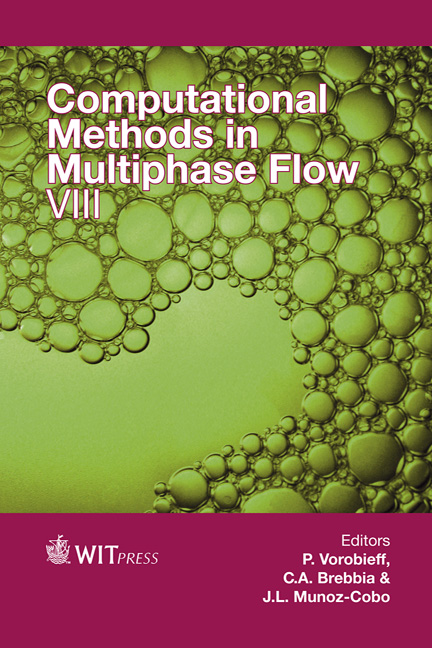Oblique Shock Interaction With A Cylindrical Density Interface
Price
Free (open access)
Transaction
Volume
89
Pages
9
Page Range
161 - 169
Published
2015
Size
6,092 kb
Paper DOI
10.2495/MPF150141
Copyright
WIT Press
Author(s)
P. Wayne, D. Olmstead, P. Vorobieff, C. R. Truman, S. Kumar
Abstract
A cylindrical, initially diffuse density interface is formed by injecting a laminar jet of heavy gas into the test section of a shock tube. The injected gas is mixed with a fluorescent gaseous tracer, small liquid droplets, or smoke particles. The shock tube is tilted with respect to the horizontal. Thus the axis of the gravity-stabilized heavy gas jet is at an oblique angle with the plane of the arriving shock front. The flow structure forming after the oblique shock wave interaction with the column of heavy gas is revealed by visualization in multiple planes. We observe the formation of the well-known counter-rotating vortex columns (same as caused by normal shock waves). However, along with them, periodic co-rotating vortices form in the vertical plane in the flow downstream of the oblique shock. The size of these vortices varies both with the Mach number and with the initial angle between the column and the shock front.
Keywords
shock waves, Kelvin–Helmholtz, Richtmyer–Meshkov, PLIF, vorticity deposition, oblique shock, wavelength, turning angle





